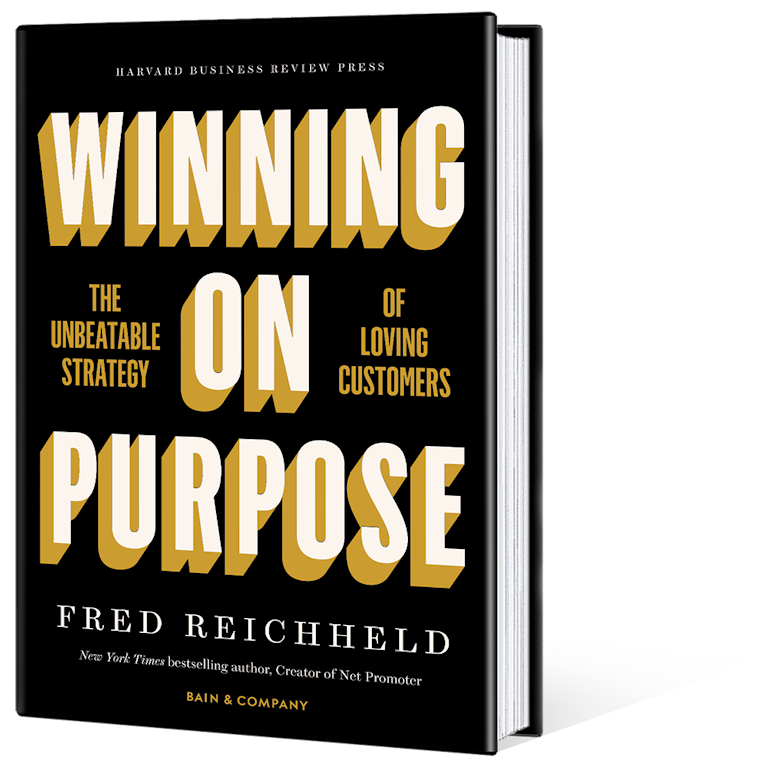The Customer Confidential Podcast
Hint Water: Plumbing a Sweet Spot in the Market
Hint Water founder Kara Goldin shares how her personal approach to engaging with customers enabled her company to developed deep, long-lasting customer loyalty.
The Customer Confidential Podcast
Hint Water founder Kara Goldin shares how her personal approach to engaging with customers enabled her company to developed deep, long-lasting customer loyalty.

Kara Goldin just wanted to be healthier. She’d realized that more water and less sugar was the answer. The problem? Water was boring. For a while, she cut up fruit to flavor her water, but that was time consuming. So she went to the store to see if she could find a commercial version of her homemade concoction.
“I mean, the first clue should have been that it was nowhere,” Kara says. “When you don’t see your product, your idea, in reality, anywhere. The good news is that it’s not there.”
Kara was excited. She’d stumbled across a hole in the market.
“But the bad news is that you might actually be launching a new category.”
In this episode, Kara shares the story behind Hint—how her quest to find an alternative to diet soda led to the creation of an entirely new type of beverage. Importantly, her story reveals how persistence and a singular focus on meeting core customer needs can result in outsized success.
“I was not just launching a company,” she says. “I was launching an entirely new category.”
Kara, a former tech executive whose book, “Undaunted: Overcoming Doubts And Doubters” was published late last year, takes us behind the scenes of her journey to develop and distribute an entirely new drink while coming up with innovative ways to get consumers and stores to try it. She shares how remaining very close to customers, first by visiting all the stores personally, later by serving as the company’s primary customer service resource, and then by developing a direct-to-consumer business alongside their grocery distribution, helped Kara nurture deep and long-lasting customer loyalty that’s still being expressed in surprising ways today.
You can listen to my conversation with Kara on Apple Podcasts, Spotify, Stitcher or your podcast provider of choice, or through the audio player below.
In the following excerpt, Kara Goldin shares how she tackled some of the distribution challenges her new product faced in the early days of Hint.
Rob Markey: You were the sales and distribution yourself. But at some point you reached a level where you couldn’t do that anymore. In those early days, when you were really out there pushing the product yourself, what did it take to get on store shelves?
Kara Goldin: I didn’t know how to get a distributor. I mean, I remember asking the guy at Whole Foods, “Do you have a list that maybe I can reach out to the different people on the list to get distribution?” And the answer was, “No, no list.” And I think that especially when you’re dealing with somebody who is a tech executive and didn’t come from the beverage industry—I mean, why should you help them?
That was kind of the attitude that I would get.
And so, I don’t know, I just kept chugging along, and I would take it to other stores. We would hear from customers, actually, who had bought it at Whole Foods initially. They’d say, “Oh, hey, do you know Woodlands out in Marin County? You should get it in there.” And so customers were really not only our source of education and direction in many cases on where else to go, but we activated customers, too. We’d say, “Hey, do us a favor. Would you mind requesting it at Woodlands?”
Rob Markey: Can you give an example of decisions you made because you were out in the field, because you were day-by-day getting feedback from stores and customers?
Kara Goldin: Definitely. Well, first of all, we realized that the lighting in every single store would be different and you couldn’t actually say that you’re going to be in this section in every single store, because that varies by store. Even a large format store vs. a smaller format, the same brand, that can vary significantly. And maybe a brand doesn’t carry a certain brand that that we’d be next to, either. And so what I realized just by being on the front lines, frankly, was that you would gain insight and information like that. And again, coming from somebody who had been a strategist and who had sort of grown from the early days of tech to sort of figuring out how do we deal with challenges, just takes time and it takes curiosity. None of this is brain surgery, right? It’s really looking at every day: What is the problem that we have, and how do we look at it?
That’s the thing that maybe differentiates great entrepreneurs. Do you remain curious? Do you stay on the front lines? I think your ability to go back and see when there’s a problem, how to reset, or pivot, or whatever is absolutely critical. To this day, when I see a problem I get back in the store. I get back on the production line. Whatever it is, I go back to the root and try and figure it out. And I think that that is what great leaders do.
Rob Markey: I think it’s a characteristic of a lot of really great leaders that they stay close to customers and they don’t let themselves get so distant from what happens with distribution, with customers, with service.
Net Promoter®, NPS®, NPS Prism®, and the NPS-related emoticons are registered trademarks, and Net Promoter Score℠, NPSx℠, and Net Promoter System℠ are service marks of Bain & Company, Inc., NICE Systems, Inc., and Fred Reichheld.

Explore more episodes of The Customer Confidential Podcast.

This new book by Fred Reichheld, Darci Darnell, and Maureen Burns demonstrates that great leaders embrace a higher purpose to win, and Net Promoter® shines as their guiding star.